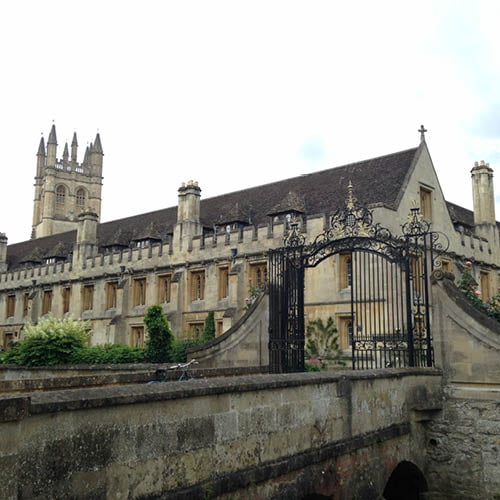Historic Christian Authors and Pioneers of Faith
‘These who have turned the world upside down have come here too’ (Acts 17:6).






We discover what’s possible by learning from those who lived the impossible. “Reading Christian biographies is absolutely important,” said Mathew Backholer. “They teach us the days of miracles are not over. It happened before; it is happening now and it can happen in our lives.”
Mathew’s brother Paul received a powerful infilling of the Holy Spirit in his youth, setting him on fire for the Lord after listening to the testimony of the Hebridean revivalist Duncan Campbell. “Are you real with God?” was the challenge Campbell gave and the recording was still anointed. Campbell went to the Lord in 1972, yet his life was still setting people on fire twenty-plus years later.
“There is a chain of grace passing down the generations,” said Mathew. “Missionary J. Hudson Taylor founded the China Inland Mission (CIM) and inspired famous cricketer C.T. Studd who joined the CIM; he later founded the Heart of Africa Mission, today’s WEC, which passed to Norman Grubb. He was mentored by Rees Howells and he helped Rees’ son Samuel, whilst my brother and I trained under Samuel.”
“We need to heed the lessons of previous generations,” said Paul. “C.T. Studd’s famous poem states: ‘Only one life ’twill soon be past, only what’s done for Christ will last.’ ”
The theme of inspiration, anointing and cross-generational blessing is Scriptural and traceable in modern times. George Müller founded a ministry to provide a future for homeless children, his life of faith inspired Rees Howells, who fellowshipped with Welsh revivalist Evan Roberts and Pentecostal pioneer George Jeffreys. A teenage Reinhard Bonnke receives his call to be an evangelist by the Holy Spirit at Rees Howells’ Bible College, then led by Samuel, and Bonnke meets George Jeffreys just before he dies, who anoints him. Thirty years later Reinhard lays hands on brothers Paul and Mathew simultaneously in prayer, on his visit to his old college.
The brothers do not claim any mantle other than the one from the Lord but note the heritage is real. The anointing is received with obedience and faithfulness, yet the cross-generational blessing or inspiration is traceable.
“Reading the biographies of the greatest missionaries and people of faith is an important part of our spiritual training,” said Mathew. “All these pioneers started as a nobody and through faith with obedience, they turned the world upside down.”
As Bible College students the brothers listened to the testimonies of older people, once young and unknown, called by God, stepping out in faith and returning years later with stories of miracles and faith. “The story doesn’t end there,” said Paul, “we continue to be inspired by the generations who went before.”
There is a cross-generational anointing which comes into your life for a specific purpose and time. Duncan Campbell inspired Paul to get on fire for God, Rees Howells’ legacy led to the training of the brothers at his college, which Samuel Rees Howells led. Then the missionary endeavours of William Carey in India, Robert Morrison in China, J. Hudson Taylor in inland China and David Livingstone in Africa inspire the brothers, as they followed in their footsteps worldwide.
Learning from the experience of other generations is key to following the Lord in this period and as time passes, you grow and become ready to receive from the Lord’s servants from different backgrounds. “The teaching legacy of C.S. Lewis was such a blessing,” said Paul. “Here is a man saved in a secular university setting, who needed to learn how to share Christ with the masses, using the colloquial language they understood.”
Christians can get bogged down with their church vocabulary and echo chamber culture, losing the ability to communicate with non-Christians effectively. It’s the reason new converts are often the best evangelists.
C.S. tried and failed to share the gospel with unbelievers and decided to relearn his communication skills to focus on the basic truths of the gospel, what he called mere Christianity. BBC radio picked up his plain language explanation of Christian beliefs during the Second World War and they become a phenomenon. Millions tuned in to hear the gospel in a way they never understood before.
“I dived into the Lewis library,” said Paul, “and crossed into the world of The Inklings, the famous literary club with members such as Warren Lewis, Clive Staples Lewis, JRR Tolkien, and a large number of other authors, theologians and friends.”
After years of study, Paul undertook a deep exploration of Oxford taking in the locations of interest to the C.S. Lewis legacy.
In the grounds of Magdalen College, pronounced Maudlyn, is the picturesque Addison’s Walk. As Paul walked this almost mile-long quaint path, he pondered the conversation C.S. Lewis partook with Tolkien and Hugo Dyson on the route in September 1931, which was instrumental in Lewis finding faith. As the three walked they were ‘interrupted by a rush of wind which came so suddenly on the still, warm evening and sent so many leaves pattering down that we thought it was raining. We all held our breath, the other two appreciating the ecstasy of such a thing almost as you would.’
C.S. Lewis, the most reluctant convert in all England struggled on till he found the fullness of faith in God and in Christ. “Christianity, if false, is of no importance,” said Lewis, “and if true, of infinite importance. The only thing it cannot be is moderately important.”
Paul took a bus, the method used by Lewis, to his home the Kilns, six miles from the centre of Oxford. He lingered in thought at the scholarly residence and traversed the 7.4 acre gardens, now a nature reserve. Some of the Lewis classics came to life in his study and the snowy garden in winter inspired the Chronicles of Narnia. C.S. Lewis known as ‘Jack’ to his friends, enjoyed sitting in the garden to debate theology with Tolkien and others, and he embraced an invigorating cold swim in the flooded clay pit.
Walking C.S. Lewis’ Sunday morning route to Holy Trinity Church, Headington Quarry, Paul found Lewis’ grave and viewed ‘Jack’s pew,’ which contains a memorial to him where he worshipped for thirty years. This was the completion of several years’ worth of study on the C.S. Lewis legacy and it left a deep impression.
“The Lord brings books into our experience to broaden our horizons and to teach us to appreciate how God works in the lives of those from different backgrounds,” said Paul. “God called people from all walks of life to be the poets, prophets and warriors in the Old Testament, and Jesus’ twelve disciples included several fishermen, a tax collector and a political zealot. Whosoever will shall come.”
Brothers Paul and Mathew have many projects in the pipeline which draw from the deep wells they have explored. ByFaith Media has also published the autobiography The Holy Spirit in a Man by R. B. Watchman, Samuel Son and Successor of Rees Howells and Samuel Rees Howells: A Life of Intercession.